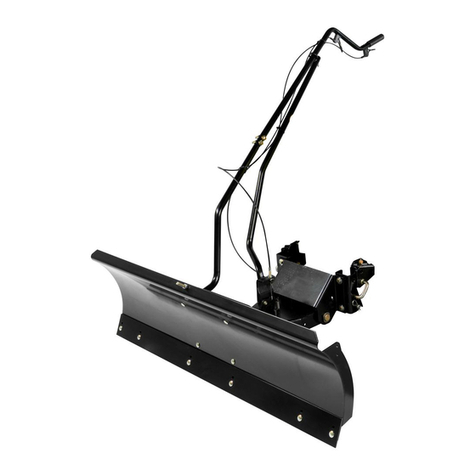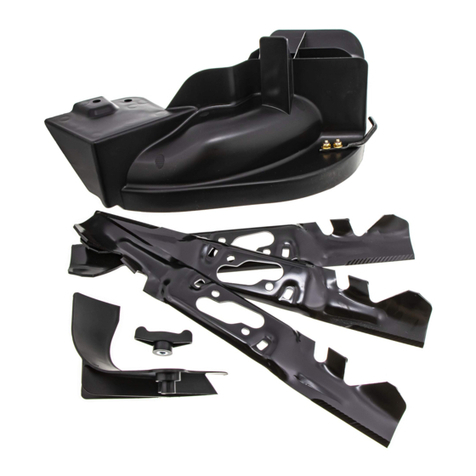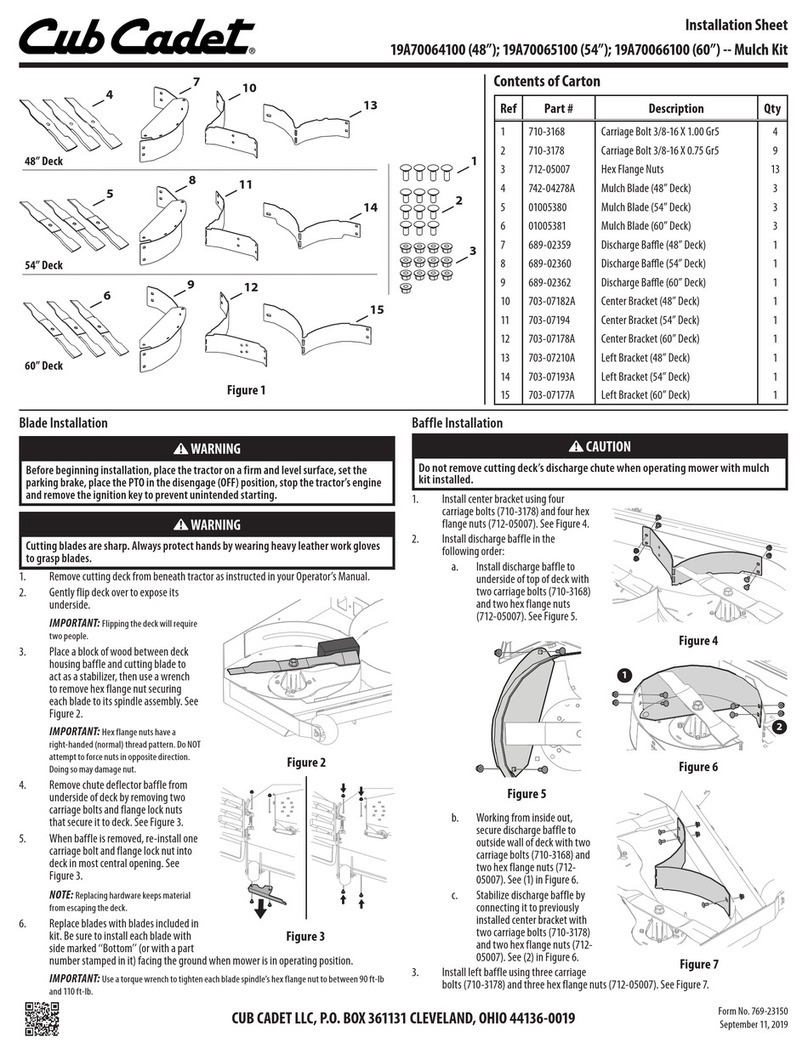
4
parking brake, turn engine off and remove key
before dismounting.
•DisengagethePTO,stoptheengineandwaituntil
the tiller comes to a complete stop before making
any repairs, adjustments, or removing any rocks or
debris.
•Useextracautionwhenloadingorunloadingthe
machine into a trailer or truck. A tractor with a tiller
attachment should not be driven up or down a ramp
onto a trailer or truck under power, the unit could tip
over causing serious personal injury. The unit must
be pushed manually to load or unload properly.
• Follow all manufacturer’s recommendations for use
of counterweights to improve machine stability.
•Ifsituationsoccurwhicharenotcoveredinthis
manual, use care and good judgment. Contact your
dealer for assistance. Telephone 1-800-528-1009
for the name of your nearest dealer.
Slope Operation
Slopes are a major factor related to loss of control and
tip-over accidents which can result in severe injury or
death. Operation on slopes requires extra caution. If
you cannot back up the slope or if you feel uneasy on it,
do not till it. For your safety, use the slope gauge
included as part of this manual to measure slopes
before operating this unit on a sloped or hilly area. If the
slope is greater than 10 degrees as shown on the slope
gauge, do not operate this unit on that area or serious
injury could result.
Do:
•Tillupanddownslopes,notacross.Exercise
extreme caution when changing direction on slopes.
• Watch for holes, ruts, bumps, and hidden objects
(e.g. rocks etc.) which can be under the soil.
Uneven terrain could overturn the machine which
may cause personal injury.
•Useslowspeed.Choosealowenoughspeed
setting so that you will not have to stop or shift while
on the slope. Always keep the machine in gear
when going down slopes to take advantage of the
engine braking action.
•Keepallmovementsonslopesslowandgradual.
Do not make sudden changes in speed or direction.
Rapid engagement or braking could cause the front
of the machine to lift and rapidly flip over backwards
which could cause serious personal injury.
•Avoidstartingandstoppingonaslope.Iftireslose
traction, Disengage the PTO and proceed slowly
straight down the slope.
•Useextracarewiththetillerattachmentasitcan
change the stability of the machine.
• Follow all manufacturer’s recommendations for
wheel weights or counterweights to improve the
stability of the machine.
Do Not:
•Donotturnonslopesunlessnecessary;then,turn
slowly and gradually downhill, if possible.
• Do not till near drop-offs, ditches or embankments.
The machine could suddenly overturn if a wheel or
the attachment is over the edge, or if the edge
caves in.
• Do not operate machine on wet grass. Reduced
traction could cause sliding and loss of control of the
machine.
•Donottrytostabilizethemachinebyputtingyour
foot on the ground.
•Donottillslopesgreaterthan10degreesasshown
on the slope gauge.
Children
Tragic accidents can occur if the operator is not alert to
the presence of children. Children are often attracted to
the machine and the tilling activity. They do not
understand the dangers. Never assume that children
will remain where you last saw them.
•Keepchildrenoutofthetillingareaandunderthe
watchful care of a responsible adult other than the
operator.
•Bealertandturnthemachineoffifachildentersthe
area.
•Beforeandwhilemovingbackwards,lookbehind
and down for small children.
•Useextremecarewhenapproachingblindcorners,
doorways, shrubs, trees, or other objects that may
obscure your vision of a child who may run into the
machine.
•Nevercarrychildren,evenwiththeattachment
disengaged. They may fall off and be seriously
injured or interfere with safe machine operation.
• Keep children away from hot or running engines.
They can suffer burns from a hot muffler.
• Remove key when machine is unattended to
prevent unauthorized operation.
Never allow children under 14 years old to operate a
power mower. Children 14 years old and over should
read and understand the operation instructions and
safety rules in this manual and should be trained and
supervised by a parent.
Service
Safe Handling of Gasoline:
To avoid personal injury or property damage use
extreme care in handling gasoline. Gasoline is
extremely flammable and the vapors are explosive.
Serious personal injury can occur when gasoline is
spilled on yourself or your clothes which can ignite.
Wash your skin and change clothes immediately.
• Use only an approved gasoline container.
•Extinguishallcigarettes,cigars,pipesandother
sources of ignition.
• Never fuel machine indoors because flammable
vapors will accumulate in the area.






























